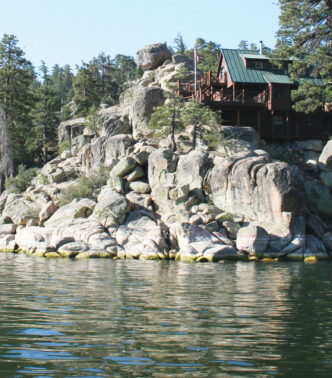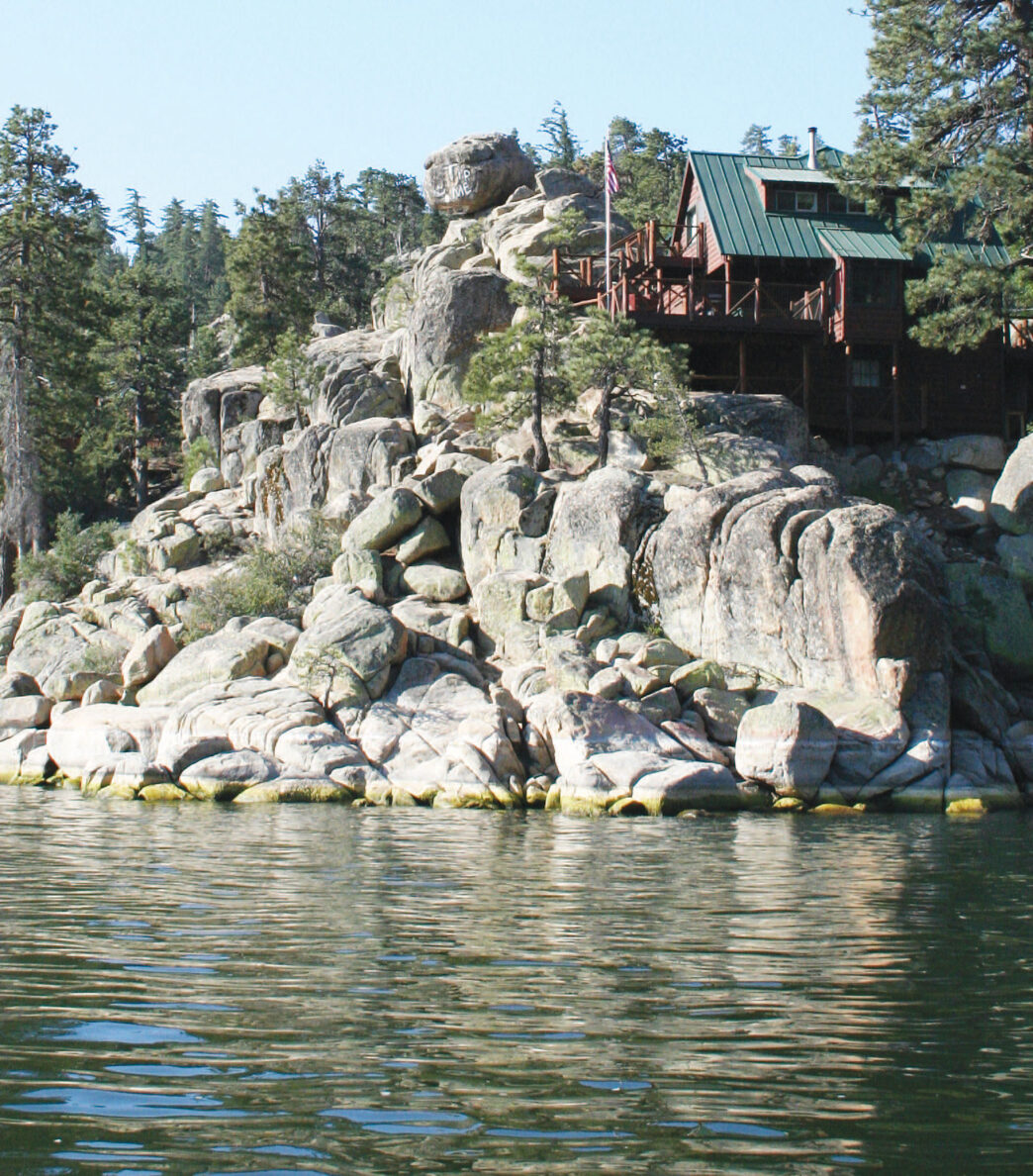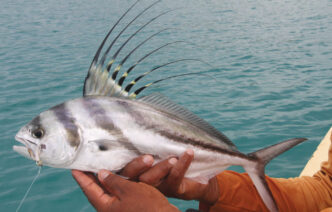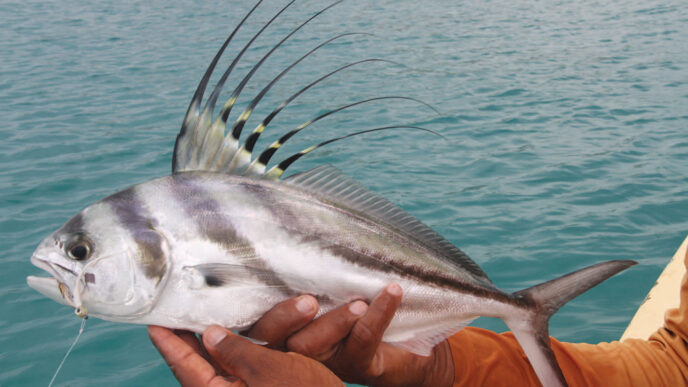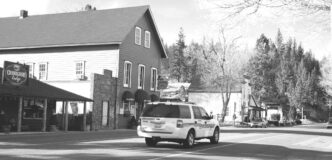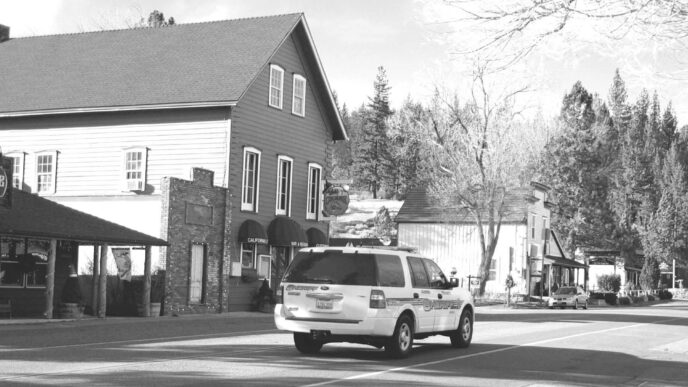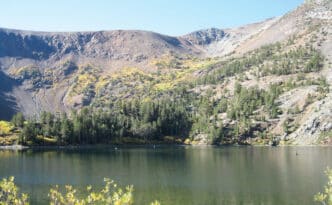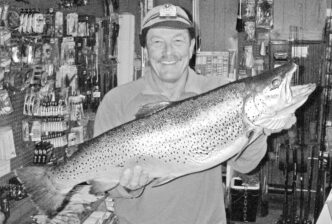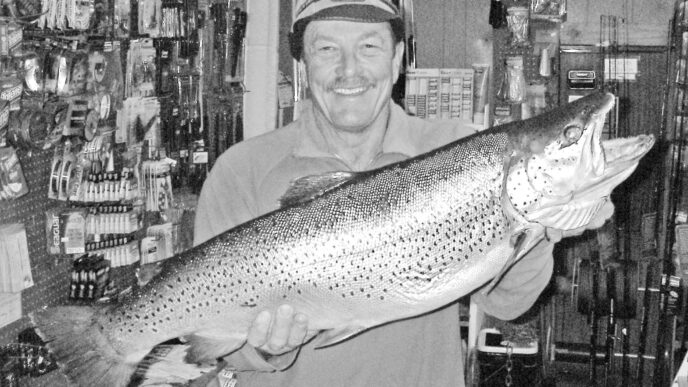Big bear lake, located in the San Bernardino National Forest about 50 miles east of downtown Los Angeles, is a major and nearly year-round Southern California trout fishery. However, another major fishery thriving at Big Bear Lake for fly anglers is northern strain largemouth bass, and to my way of thinking, not enough anglers fish for Big Bear’s largemouths. On top of that, there also are smallmouth bass in Big Bear Lake. They were introduced many years ago by the Big Bear Lake Fishing Association, and a second stocking of smallmouths was made in the spring of 2007 by the Big Bear Municipal Water District, which manages the lake. It would be a mistake to overlook the angling opportunities that are offered by Big Bear’s bass.
Big Bear has long-held largemouth bass, and the northern strain largemouths that comprise the bass population in Big Bear Lake seem to tolerate Big Bear’s cooler water better than the southern strain bass that have been introduced into so many lower-attitude lakes and reservoirs in Southern California. I can remember catching a few small fish in the late 1950s, but in recent years, the quality of the bass fishery has soared along with the population of largemouths in the lake. The largemouth fishery at Big Bear is underutilized, and it’s really quite good. One of my favorite things is wading the shallows on the north shore, particularly in Grout Bay, close to the town of Fawnskin. Bass and panfish move into this area in the spring to spawn, and casting bugs and flies is a great way to spend a day catching fish. By contrast, the overall story of smallmouth bass fishing in Big Bear is not so good, and it remains to be seen what the most recent stocking will accomplish. I think the story is fascinating for another reason, however. Who ever heard of a water district that was interested in anything but selling water? The Big Bear district is something special.
“We got a permit from the California Department of Fish and Game [recently renamed the Department of Fish and Wildlife] and went to Shaver Lake, near Fresno,” said lake manager Mike Stephenson. (Shaver is at 5,370 feet, and its overall nature is much like that of Big Bear Lake. It is well known for having a large number of small-sized smallmouth bass.) “Our permit allowed us to obtain 500 smallmouths, and we took rods and caught them, instead of netting them. Most were about five inches in length.”
The earlier first stocking of smallmouths had consisted of a smaller number of more mature fish taken from nearly Lake Arrowhead, although the History and Status of Introduced Fishes in California (California Department of Fish and Game, 1997) indicates that both Arrowhead and Big Bear, as well as several other Southern California reservoirs, also received smallmouth bass from Northern California at about the same time.
The fish from Lake Arrowhead survived being transported and stocked into Big Bear Lake, but they never reproduced at the rate that would create a good smallmouth fishery. Nobody knows exactly why. Although the stocking from Shaver Lake occurred quite recently, indications are that these fish are reproducing satisfactorily and should become a major part of the fishery in future years.
Big Bear’s Smallmouth Bass
Smallmouth bass are interesting beasts. While clearly related to their largemouth cousins (as noted by their name, the primary physical difference between the two basses is the size of the mouth), smallmouths, to my mind, are much more troutlike in their eating habits than largemouths. Though both species will consume a wide variety of critters, including insects, smallmouths are much more likely to rise to hatching caddisflies and mayflies or to cruise the topwater sipping terrestrial bugs, giving a troutlike feeding performance. Then again, like largemouths, they may root around the bottom for crayfish — all in the same day.
While I think all bass are handsome in a solid, chunky, prizefighter’s way, the smallmouths, it must be said, are often better looking than largemouths. Part of it is their coloration. Both basses have dark green on their backs and silvery-white bellies. In the case of smallmouths, however, their bellies are often darker and more vivid, and I see greenish-bronze highlights in the color of their backs. They really are a handsome fish.
I remember thinking that Big Bear Lake looked like smallmouth country the first time I saw it. At an altitude of 6,750 feet in the pines of the San Bernardino National Forest, Big Bear has a shallower, less steep side on the north shore and a jumbled, boulder-ridden south shore stretching from the dam on the west end back to Gilner Point. That south side looks like every photo you’ve ever seen of a typical smallmouth bass lake, while the north shore resembles more a mountain trout lake.

Largemouth Bass
While the smallmouth fishery is a work in progress, Big Bear’s largemouth bass fishing can be pretty good. Although considered a warmwater fish, the lake’s northern strain largemouths become active about the same time in the spring as the trout, which makes me think that the behavior of the northern strain fish is driven as much by the photoperiod (length of daylight) in the early spring as it is by water temperatures.
Once the surface temperature reaches 46 to 47 degrees and we reach the latter end of February, it’s very possible to catch both largemouth and smallmouth bass in relatively shallow water, 8 to 10 feet deep, with sinking lines. Bulky “jig” patterns such as the Calcasieu Pig Boat and crayfish patterns work well for the largemouth bass, and smaller crayfish flies or even large dry flies work for the smallmouths.
Several years ago, I got a hurried call from Manny Freire, a local bass guide. “You need to go with me to Big Bear. The bass are whacking anything that moves,” he said. Since it was late February and there was still snow on the ground around the lake, I suggested we should wait a few weeks. Manny persisted, and while I thought it was a waste of time, we soon wound up at Big Bear, launching his bass boat even though the lake’s marinas and launch ramps were still officially closed for the winter.
The water temperature was just 46 degrees at the surface. It was before the local marinas opened for the spring fishing, and there were huge floating rafts of extra docks anchored out in the shallow bays on the south side of the lake. Around these docks we found water temperatures a degree or two warmer than the rest of the lake. There were bass in decent numbers present, and they were not at all lethargic. We caught fish that day on everything from jigs, to lures, to flies. Most were largemouths, but I recall at least a couple of chunky smallmouths in the live wells on Manny’s bass boat when we photographed and released our catch.
Big Bear’s bass respond well to the same olive or black Woolly Buggers that catch Big Bear’s trout. Especially useful is a variant of the Woolly Bugger created by local angler Keith Kern. This fly is tied on a bent-shank jig hook, fishes on the bottom, is fairly weedless, and catches both trout and bass. It’s called Keith’s Bottom Bouncer and is available at Big Bear Sporting Goods. Another fly that has worked well for me in the past is any kind of dragonfly nymph imitation. The bigger, darker, and uglier the better.
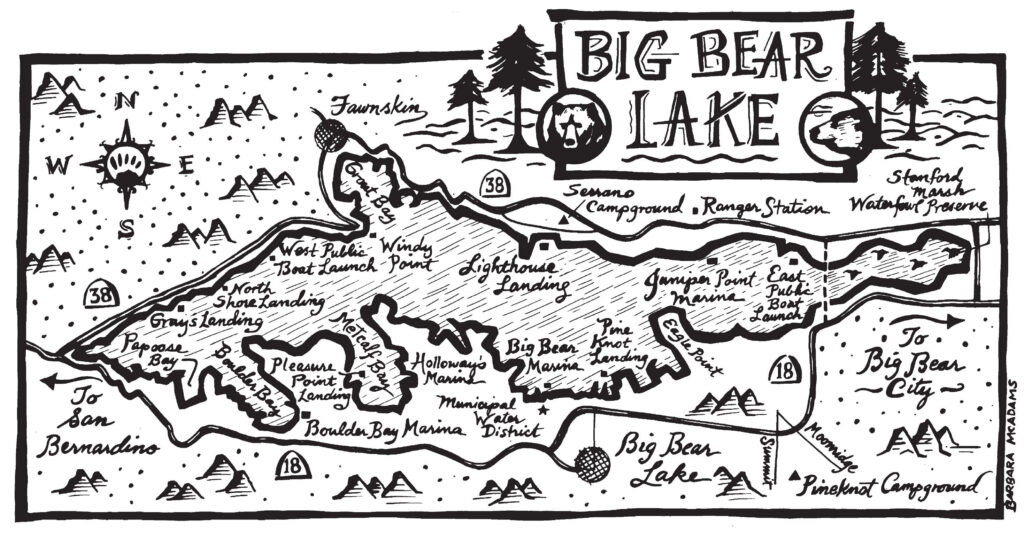
In the last year or so, I’ve been catching a few bass on a simple rabbit fur “worm” tied with one strip of rabbit fur for a tail and one cross-cut strip wrapped as a collar on the hook shank. It’s a bass-sized version of a popular pike fly. A pair of large bead-chain or lead eyes gives this fly a jigging action when fished with a floating line. Try tying these in dark olive, black, and, surprisingly, bright chartreuse.
Once the water reaches the mid-60degree range, top-water bugs and poppers begin to be a viable option. Typical flies for Big Bear include deer hair mice, frog patterns in hair or cork, and standard cork poppers. I’ve had good results with yellow as a basic popper color, but almost anything works when the conditions are right. Big Bear doesn’t have the threadfin shad that most Southern California bass waters contain as a primary forage fish. It gets too cold. The bass forage here on bluegills, pumpkinseed sunfish, and baby carp.
As I said, smallmouth bass have a troutlike appetite for smaller flies. You can catch them on dry flies and trout-sized nymphs. I have caught smallmouths and even largemouths on a size 12 Elk Hair Caddis, which probably all of us have in our fly boxes. For some reason, a gaudy Royal Coachman, about size 10 or 12, also works at times. I like to fish a really big Black Gnat (tied wet), and as noted, a large dragonfly or damselfly nymph is a good thing to have in your kit.
A fly-rod popper of moderate size is a good all-around choice for both species of bass. I like small pencil poppers in bassattracting colors — yellow or red and white. Black is also a productive color for smallmouths late in the day, with yellow poppers being good when the sun is higher. While rock piles with adjacent weeds are often touted as primary smallmouth habitat, and you can catch Big Bear’s smallmouths off of the rocky areas, you will also find them in and around the big, shallow weed beds that are along the north shore, mixed in with both panfish and largemouths.
When I first started fishing for bass with a fly rod, a 7-weight was considered about right for the task. I’ve dropped down a line size when angling with graphite rods and fish a 6-weight for both bass and trout. I like the feel you get from a fiberglass rod and fish any one of several old Fenwick rods on lakes such as Big Bear. They have a slightly slower action than graphite, and that, coupled with their low cost these days (if you can find them — they are becoming collectable) makes them ideal rods for the rough and tumble of fishing from a float tube in rocky areas.

Other Game Fish
In addition to trout and bass, panfish represent a good portion of the fishery at Big Bear. Bluegills used to be more common and larger than they are now, but as their numbers fell, the bass population grew, so it’s a trade-off I don’t mind. The lake has a big population of pumpkinseed sunfish, some bluegills, and a bit of a crappie fishery. After several years of very poor crappie angling, this species seems to be making a comeback for 2013. All of these panfish are susceptible to both dry flies and wet flies. I like either slow-sinking rubber spiders with long, wiggling legs or tiny cork poppers for most of my panfish angling. The fish tend to tear up dry flies too quickly. A cast of wet flies, two or three flies at a time, will often produce spectacular results on schooling crappies.
Carp make up what could be an excellent third-tier fly fishery here. Big Bear Lake is loaded with them and for many years has hosted annual bowfishing tournaments to remove them from the lake. It certainly hasn’t eradicated them and may not even hold their numbers in check, but bowhunters stalking the shallows with fishing arrows often kill 100 or more large carp in a day. The potential for fly anglers to target these fish is very high. I started catching carp in Big Bear nearly two decades ago and still enjoy doing so in the spring, when the carp are in the shallows in huge numbers, spawning. They will take, or at least strike at, small olive nymphs and Woolly Buggers.
A recent dredging project has deepened the eastern end of the lake to allow easier launching and recovery of boats from the public launch area there. Ideas about how the dredging might affect fishing vary. Some anglers have worried that it would cause excessive siltation of the lake when the dredges are operating, and almost everybody agrees that the weeds are the primary habitat that gives this lake its excellent fish production, but the weeds also limit boater access to fishing, and the local boat-dock owners almost universally hate the slop that swallows the shallows each summer.
With the dredging completed some months ago, it appears that the boat access has been improved, and so has the fishing at the east end of the lake, mostly due to some smart contouring of the bottom by the folks who did the dredging.
While there are a number of waters in Southern California that have bass, Big Bear Lake is a good place to catch both largemouths and smallmouths of reasonable size, along with panfish and carp, in addition to trout. It’s close to the Los Angeles area and has all the services (except for a fly shop) that you’ll need. You can’t ask for much more.

If You Go . . .
Big Bear Lake is operated by the Big Bear Municipal Water District, which charges fees for boat use at the lake. The daily fee for registered boats is $35.
The yearly fee for any motorized boat and for sailboats over eight feet is $120. Floattube anglers pay $15 daily, with the option of a $50 annual fee. Lake permits are available at the public launch ramps, the water district office, and several of the marinas. You used to be able to launch your float tube and just carry the cash for a one day permit with you. If you got caught by the lake patrol, you forked over the cash and got your permit. They now charge an additional $10 for that service, so be sure to get your permit before you launch. They’ll also charge you $5 for a quagga mussel inspection before you launch.
Highway 18 on the north shore has some services and most of the campgrounds. The Forest Service operates large campgrounds there, and you can find several privately operated campgrounds, as well. The town of Fawnskin has restaurants, lodging, and gas, plus stores and a post office. The south shore, on Highway 38, including the small cities of Big Bear Lake and Big Bear City, is much more urbanized, with shopping centers, many motels and restaurants of good quality (plus the standard mix of fast-food joints), and plenty of gift and curio shops for the browser.
The lake has two public boat ramps in addition to a number of private marinas and launch facilities. Both ramps are open most of the year, except for Tuesdays at the east ramp. The west ramp is open seven days a week from mid-May to late October. Don’t expect to find ramps open during winter.
Big Bear Lake is located in the San Bernardino National Forest east of Los Angeles. To reach it, most people take Highway 330 up from San Bernardino to where it joins Highway 18, also known as the Rim of the World Highway, at the community of Running Springs, then head east to Big Bear. There are two additional routes. One is via Highway 38 over Onyx Summit from the Redlands/Mentone area. The other is via Highway 18 up through Lucerne Valley from the desert side of the mountains.
A San Bernardino County auto map from AAA is a good starting point for planning trips. You can get a topographical map of Big Bear Lake from the Fish-NMap Company, http://www.fishnmap.com. You can also get a book on CD about fly fishing Big Bear Lake from Keith Kern. It is available in local sporting-goods stores, and you can also contact him at kflies@charter.net for a copy.
Richard Alden Bean



